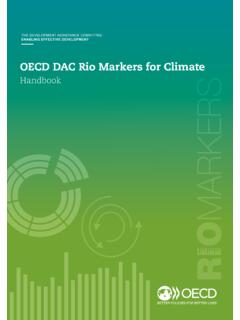Transcription of Koreans in Japan (Zainichi Koreans) - Columbia University
1 Koreans in Japan ( zainichi Koreans ) Kazuko Suzuki Department of Sociology Texas A&M University (2004-2005 ExEAS Postdoctoral Fellow) Table of Contents 1. Introduction 2. Audience and Uses 3. Background Information for the Instructor 4. Readings for the Instructor 5. Student Readings 6. Discussion Questions 7. Further Reading Introduction Today the notion that Japan is homogeneous prevails both inside and outside of Japan . This unit looks at ethnic Koreans residing in Japan and challenges the assumption that Japan is homogeneous while also raising questions about what it means to be Japanese. Koreans constitute the largest foreign community permanently residing in Japan . Despite their similarities in physical appearance and considerable acculturation to mainstream Japanese society, Koreans in Japan have been discriminated against by both the Japanese state and Japanese society.
2 This unit provides historical background on korean migration to Japan and the subsequent discrimination against them, and addresses two main issues: 1. identity: how common Japanese perceptions about Japanese identity differ considerably from Japan s demographic reality, and 2. integration of minorities: how physical and cultural similarities between ethnic groups do not guarantee that the majority group will accept a minority. Audience and Uses This unit can be used in a wide range of courses, including but not limited to: Race and Ethnicity in East Asia Sociology of Minority Groups 1 Comparative Race and Ethnic Relations Postwar Japanese Society The unit can be used by itself or in combination with the following other units on race, ethnicity, and nationality in East Asia: Chinese Perspectives on Identity Before the Nation Nationalisms, Ethnicity, and Identity in Contemporary China Nationalisms in East Asia Okinawa: Beyond the Ethnic Other Race and Ethnicity in Asian America Race, Ethnicity, and National Identity: America , Korea , and Biracial Koreans Race, Ethnicity, and National Identity in Contemporary China.
3 Redefining Chineseness For summary information on many of these units, see Not Color Blind: Race, Ethnicity, and Nationality in East Asia. Background Information for the Instructor Why did Koreans Come to Japan ? The history of Japanese colonialism bears heavy on the status of ethnic Koreans in contemporary Japanese society. In 1910, Japan annexed Korea, and while some Koreans had already resided in Japan , due to geographical proximity, Japan s colonial rule in Korea prompted unprecedented large-scale korean migration to Japan . There were three major korean migration streams to Japan . The first and second waves occurred in response to Japan s colonial restructuring on the korean peninsula. The third wave, 2which occurred between 1939 and 1945, was brought upon by war and was involuntary.
4 Under the National Manpower Mobilization Act of 1939, korean laborers and military draftees were brought to Japan as manpower to fuel the wartime economy. When Japan annexed Korea, there were only 790 Koreans in Japan , mostly students; by the end of World War II, the korean population had surpassed 2,300,000. Immediately following the war, many of these Koreans returned to their homeland. However, due to economic difficulties in post-war Korea, about 650,000 Koreans decided to stay in Japan . The Koreans who stayed in Japan and their descendants came to be called zainichi Koreans , one of the largest minority groups in Japan today and a source of considerable majority-minority tensions. Classification of the korean Population in Japan Slightly more than 40 percent of all registered foreigners in Japan are Koreans .
5 This number includes both zainichi Koreans and recent newcomers from South Korea. (Since Japan does not have diplomatic relations with North Korea, most newcomers are from South Korea.) zainichi Koreans , those who came to Japan during Japan s colonial rule over Korea and their descendants, are classified into two groups: North Koreans and South Koreans . zainichi Koreans are customarily distinguished from newcomers by both Japanese society and the Japanese state. The literal meaning of zainichi is staying in Japan temporarily. One may wonder why old-comers who have been in Japan for more than 50 years are still called temporary residents. This term reflects the desire of many Koreans to someday return to their mother country especially after World War II, when the Allied Powers defeated Japan , liberated Koreans in Japan had a strong desire to go back to Korea.
6 However, those ambitions faded over time. zainichi Koreans , now in their fourth generation , are permanent residents of Japan , and many of them no longer have a desire to go back. Despite this, the term has survived, reflecting the reality of institutional discrimination by the Japanese state and Japanese society. Nationality of zainichi Koreans The nationality of first generation zainichi Koreans changed several times over a relatively short period of time. First, prior to Japan s colonization of Korea, all people living on the korean peninsula shared korean nationality. When Korea became part of Japan in 1910, all Koreans became subjects of the Japanese emperor. In 1952, when the San Francisco Peace Treaty took effect, zainichi Koreans lost their Japanese nationality, and those who could not or did not go back to the korean peninsula became stateless.
7 As foreigners, they were allowed to apply for 3citizenship via the naturalization process. However, due to widespread discrimination against Koreans in Japan , this has proven very difficult for many zainichi Koreans . Despite stringent naturalization criteria for zainichi Koreans , the number of naturalized zainichi Koreans has gradually increased since the 1990s. Non-naturalized zainichi Koreans did not have a nationality until at least 1965 when Japan and South Korea normalized diplomatic relations. zainichi Koreans who pledged political allegiance to South Korea, regardless of their geographical origins in the North or South, obtained South korean nationality. zainichi Koreans who have geographical origins in the North and have neither pledged allegiance to the South nor have not yet become naturalized Japanese citizens have no nationality, since the Japanese government has yet to establish diplomatic relations with North Korea.
8 These people, though they do not have a legal nationality, consider themselves to be overseas North Koreans . Currently, both North and South zainichi Koreans have gained legal status as special permanent residents of Japan , which was also a product of the Japan -ROK diplomatic agreement. Since establishing diplomatic relations with South Korea in 1965, the Japanese government has taken some steps to further integrate zainichi Koreans into Japanese political and social life. In the late 1970s, the Japanese government increased zainichi Koreans access to social security benefits, and in 1982, the government granted permanent resident status to those Koreans (and their children) who had established residence in Japan before the end of World War II.
9 Nearly a decade later, the government extended this right to third generation Koreans in Japan . Most recently, in 1993, the government halted the practice of fingerprinting Koreans and other permanent residents during alien registration procedures. Sources of Identity Problems In 1952, Japan regained full political control from the Allied forces and embarked upon a campaign to radically transform itself from an empire into a single nation state. As such, the government created policies that excluded former colonial subjects still residing in Japan . zainichi Koreans , who under colonial rule had been Japanese nationals and forced to culturally assimilate into Japanese society, were disfranchised and racialized as aliens through these exclusionary policies in the postwar period.
10 Postwar Japanese nationalism emphasized the immutable or natural aspect of Japanese identity, and Japanese blood lineage was considered a symbol of superiority and legitimate 4authority. Such ways of understanding Japanenessness continue to exclude zainichi Koreans , and in a strict sense, do not allow zainichi Koreans to be considered Japanese even after they have become Japanese citizens through naturalization. Similar to many first generation immigrant groups, the identity of first generation zainichi Koreans has been strongly tied to their homeland. However, during the Cold War, this relationship became entangled in international politics. With the split of the korean peninsula into North and South, zainichi Koreans transformed from mostly unskilled laborers to highly politicized minority groups by forming two opposing ethno-political organizations.















